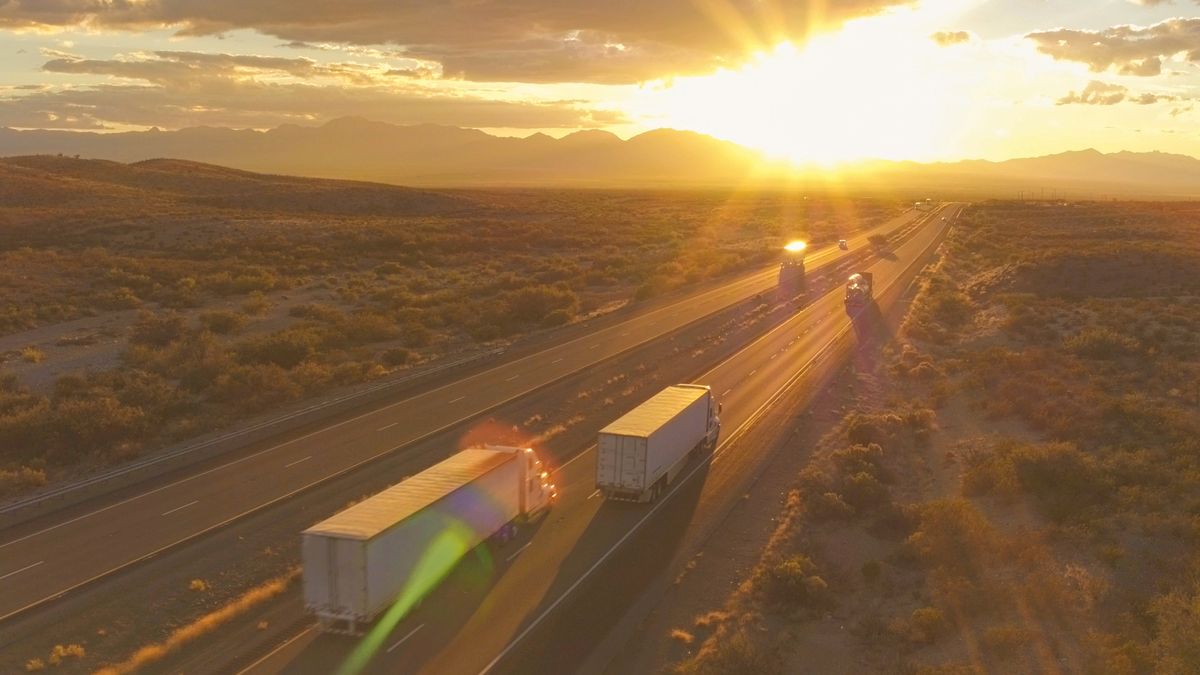
Create a Contingency Plan to Keep Freight Moving When Capacity Is Tight
"Fortunately for freight economy, the pattern has been more V-shaped," said Kenny Vieth, president of ACT Research. "The story for the transport sector and particularly for heavy-duty trucks can be summed in two words: surprisingly strong."
Vieth said consumer spending on goods, pent-up demand for inventory restocking, a hot housing market, low interest rates and low energy prices are supporting freight. "Over-the-road carriers are enjoying a period of volume growth and pricing power that would have been considered shocking, though welcomed, from an April 2020 vantage point," he said.
Vieth added that one of the biggest surprises is illustrated by real personal consumption. "Since consumers couldn't spend on experiences like vacations, sporting events and concerts, they put that money to work buying goods. Summer vacation doesn't fit into a truck, but stuff does," he said.
Because capacity is tightening, shippers should be proactive to ensure freight keeps moving if a disruption or a sudden spike in demand occurs. Information and visibility are at the core of an effective contingency plan, enabling transportation providers and shippers to identify a potential issue early and get ahead of it to minimize the impact.
"Inevitably, with disruptions, there is an inverse relationship between the time you become aware of the disruption and when you react and the availability and cost of the solution. The bigger the surprise and the shorter the amount of time you have, the more it is going to impact you," Moses said.
Having a high-level, connected view of the supply chain as well as granular specifics delivered in realtime can drive tactical decisions. That level of visibility, which Penske offers through its ClearChain® technology suiteenables planning.
"The visibility tools we have deployed allow our shippers to identify suppliers, plants, routes, customers and carriers that might be affected by a disruption,"Moses said.
LeAnne Coulter, vice president of freight management for Penske Logistics, said a high level of visibility helps Penske identify transportation capacity. "We have enough data and can apply machine learning to see where carriers are able to help in times of crisis and react or be proactive to pull orders ahead," she said, adding that Penske can help its customers understand where inventory is and where it might need to go.
In a weather event, such as a hurricane or a severe storm, it makes sense to speed up deliveries, Coulter said. "You're never quite sure what the infrastructure impact might be, and then there is the recovery time. You might have people and businesses without power for an extended period," she said. "There are generally at least a couple of days you can react prior to a storm."
When port congestion occurs, shippers have to look for alternative options, Coulter said. "If you ship through the Port of Long Beach, will Portland, Seattle or Vancouver be able to meet your needs? Could you shift to an East Coast port? What will that do to your transit time? It is all a matter of trying to bypass the most likely bottlenecks you might encounter," she said.
Having solutions in place can also help shippers react if there is a sudden spike in demand.
Penske has a variety of ways to support clients through their decision-making processes and help them secure capacity, including logistics services, commercial rental trucks and truck leases. Penske's team of experts can work with customers to get contracts and solutions in place before a problem occurs, so setting Plan B in motion is as easy as a phone call.